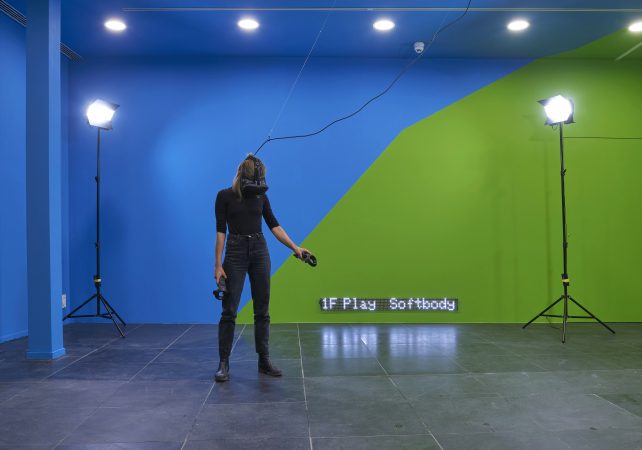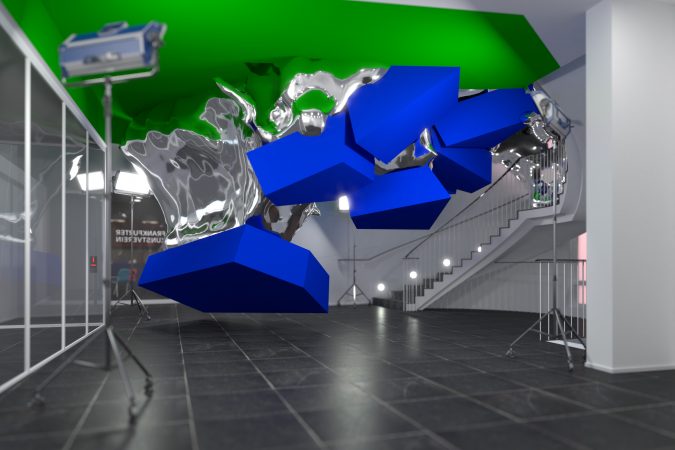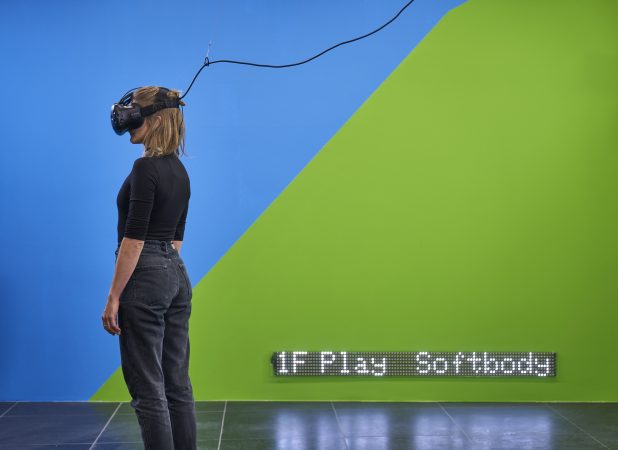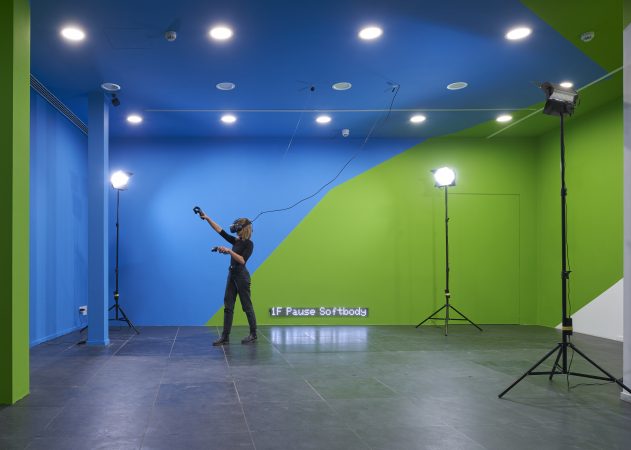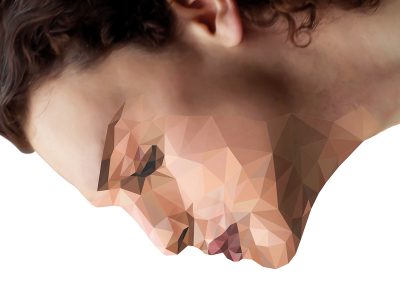Manuel Roßner
WETWARE, 2017
Installation / VR-application, LED panel, spotlights, paint
Courtesy the artist
In his work “Wetware”, Manuel Roßner (*1989) has digitally recreated the architecture of the Frankfurter Kunstverein. Countless photographs of the interior and exterior gave Roßner the raw data for his illusionistically constructed virtual environment. With the help of VR glasses, the visitor enters a replica of the real room they are in and then proceeds to perceive and react to the changes of this fictitious twin. In this virtual space, there is an enormous sculptural form: a cube in an undefined state of matter, flowing like quicksilver. It breaks through the ceiling and liquefies, and in doing so seizes and floods the entire realm of experience with an explosion. The user can determine the location, timespan, and behaviour of the fluid material using a controller.
Roßner uses physics simulators, software, and scientific databases on the Internet as tools to visualize the behaviour of this material in space. He generates the material according to physically exact parameters with the help of simulation tools and programmed effects, but then freely combines and arranges it independently of real physical laws. The surface of the flowing form has the reflective properties of metal and refracts the artificially set lights. The user can change the material‘s viscosity, from fluid to paste-like, thereby also changing how the form behaves in space. Roßner’s visual worlds do not follow a narrative. They are a pure experience of colour, form, and material in space.
In this controlled, virtual space, he redefines the material‘s properties, thus creating sculptures in a virtually constructed aesthetic simulation. The work‘s title, “Wetware”, refers less to the virtual experience of the fluid form than it does to the user. “Wetware” is a colloquial term used in IT. In contrast to hard and software, it designates a biological life form, which, like humans and their organs, consists mostly of water.
Manuel Roßner lives and works in Berlin (DE). He studied at University of Art and Design, Offenbach (DE), as well as at École des Arts-Décoratifs in Paris (FR) and Tongji University in Shanghai (CN). In 2012 he initiated Float Gallery, where the classical white cube is extended to the digital realm. He is part of Internet TBD, a project mapping topics related to the hangover of the Internet.

